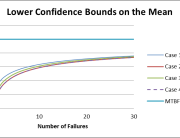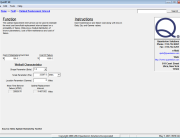Reliability and quality are different product attributes related to overall performance and perceptions in the marketplace.
On one hand, reliability can be viewed as being inherent to the product design: it will perform reliably in the intended environment for the intended time under the intended conditions based on the level of reliability inherent in the parts, materials, software and processes used to develop that product. A reliable product does not, however, necessarily translate into a high quality product. If a product is not easy to use, if it does not look attractive, or if poor quality processes degrade the inherent reliability built into the product, then the product will likely be viewed as having poor quality and, possibly, unreliable.
On the other hand, a product can have “poor” inherent reliability in that it doesn’t meet it’s reliability requirements, but may still be considered to have “high” quality if the product meets all of the quality attributes/processes defined for it by the manufacturer (easy to use, attractive, manufacturing processes are in statistical control, quality processes do not degrade the inherent reliability designed into the product). A high-quality product, therefore, does not necessarily mean that the product is highly reliable (or even acceptably reliable). In this case, the customer may also consider the product to be of poor quality (even though the quality processes are “within spec” and unreliable.
A combination of high designed-in product reliability and high quality processes that do not degrade that inherent product reliability will likely translate into a customer’s perception of high quality for a company’s products. Quality Management represents the practice of implementing controls to ensure that the inherent reliability of a product or system’s designed is maintained through the item’s production and introduction to operation in the field. This often involves statistical controls, including the Testing and Simulation and subsequent Data Collection and Analysis of components during and after production, and the Root Cause Analysis of identified shortfalls in a component’s performance. The activities performed to design reliability into the system are covered in a number of the other FAQs on this page.



